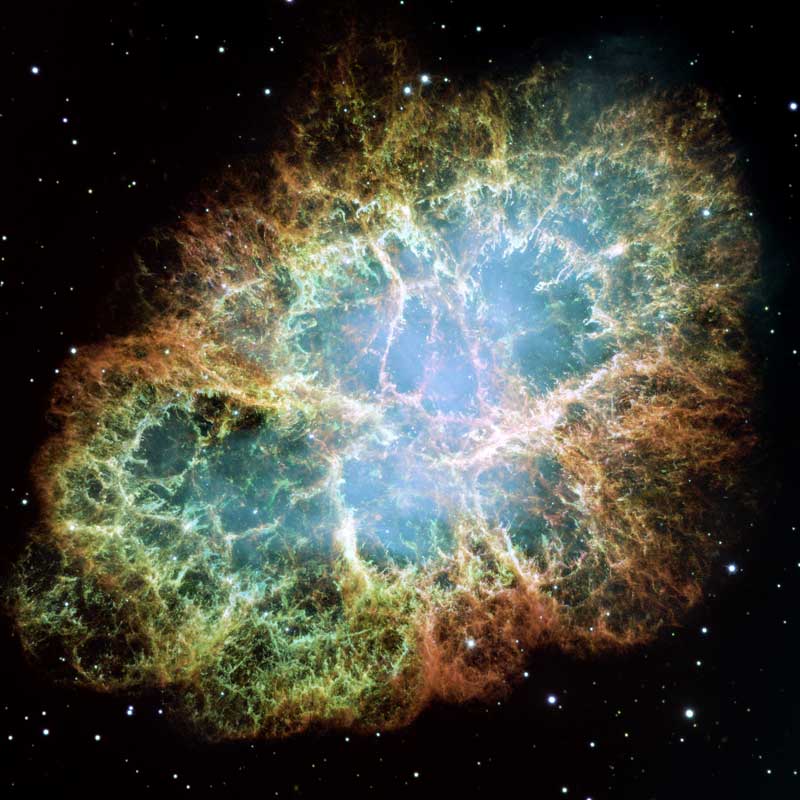The Crab Nebula was an exploding star
Larry Sessions in ASTRONOMY ESSENTIALS | CLUSTERS NEBULAE GALAXIES | October 5, 2019
The Crab Nebula, about 6,500 light-years from Earth, is the scattered fragments of a supernova, or exploding star, observed by earthly skywatchers in the year 1054.

The Crab Nebula is a cloud of gas and debris rushing outward from a great stellar explosion seen a thousand years ago by earthly skywatchers. The Hubble image above shows intricate filimentary structure in the expanding debris cloud. Color and contrast are enhanced to show detail. Image via NASA/ESA/J. Hester and A. Loll (Arizona State University). |
History of the Crab Nebula. On July 4, in the year 1054 A.D., Chinese astronomers noticed a bright “guest” star near Tianguan, a star we now call Zeta Tauri in the constellation of the Taurus the Bull. Although the historical records are not precise, the bright new star likely outshone Venus, and for a while was the third-brightest object in the sky, after the sun and moon.
It shone in the daylight sky for several weeks, and was visible at night for nearly two years before fading from view.
It is likely that skywatchers of the Anasazi People in the American Southwest also viewed the bright new star in 1054. Historic research shows that a crescent moon was visible in the sky very near the new star on the morning of July 5, the day following the observations by the Chinese. The pictograph above, from Chaco Canyon in New Mexico, is believed to depict the event. The multi-spiked star to the left represents the supernova near the crescent moon. The handprint above may signify the importance of the event, or may be the artist’s “signature.”
From June or July 1056, the object was not seen again until 1731, when an observation of the now quite faint nebulosity was recorded by English amateur astronomer John Bevis. However, the object was rediscovered by French comet-hunter Charles Messier in 1758, and it soon became the first object in his catalog of objects not to be confused with comets, now known as the Messier Catalog. Thus, the Crab Nebula is often referred to as M1.













 Reply With Quote
Reply With Quote